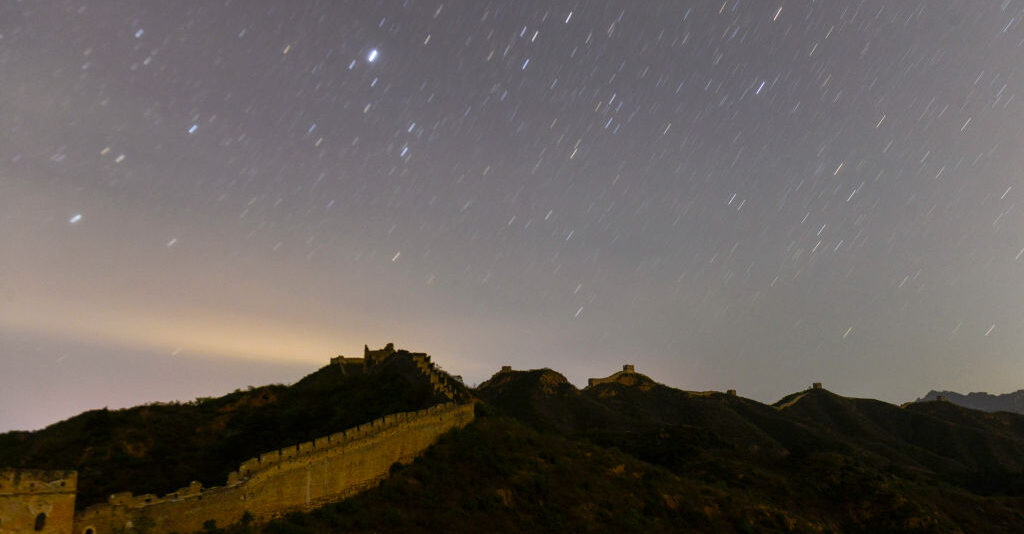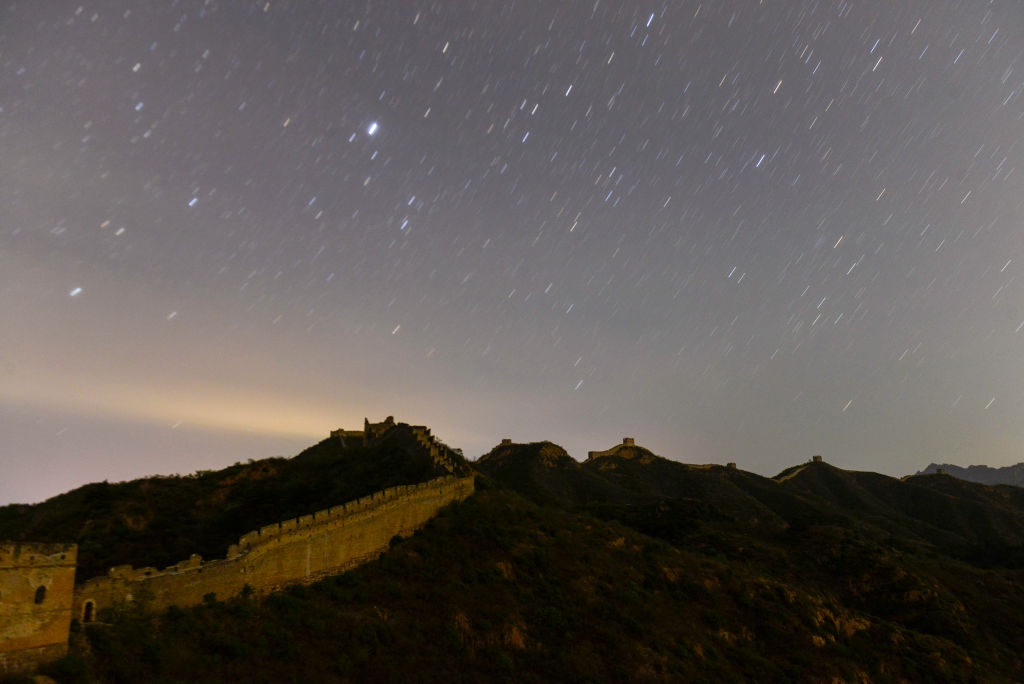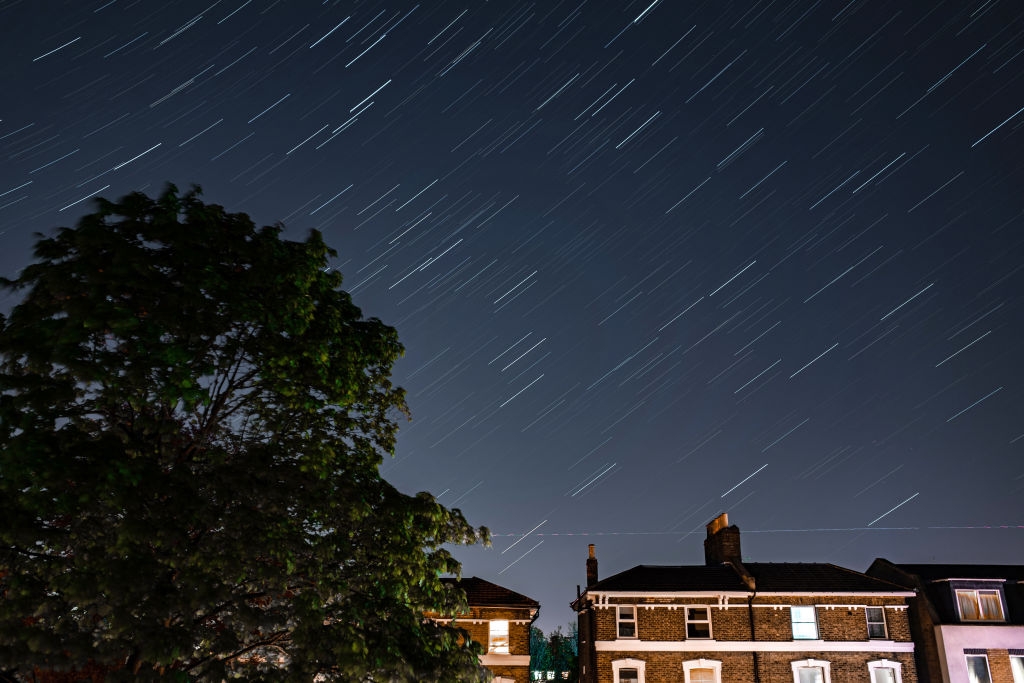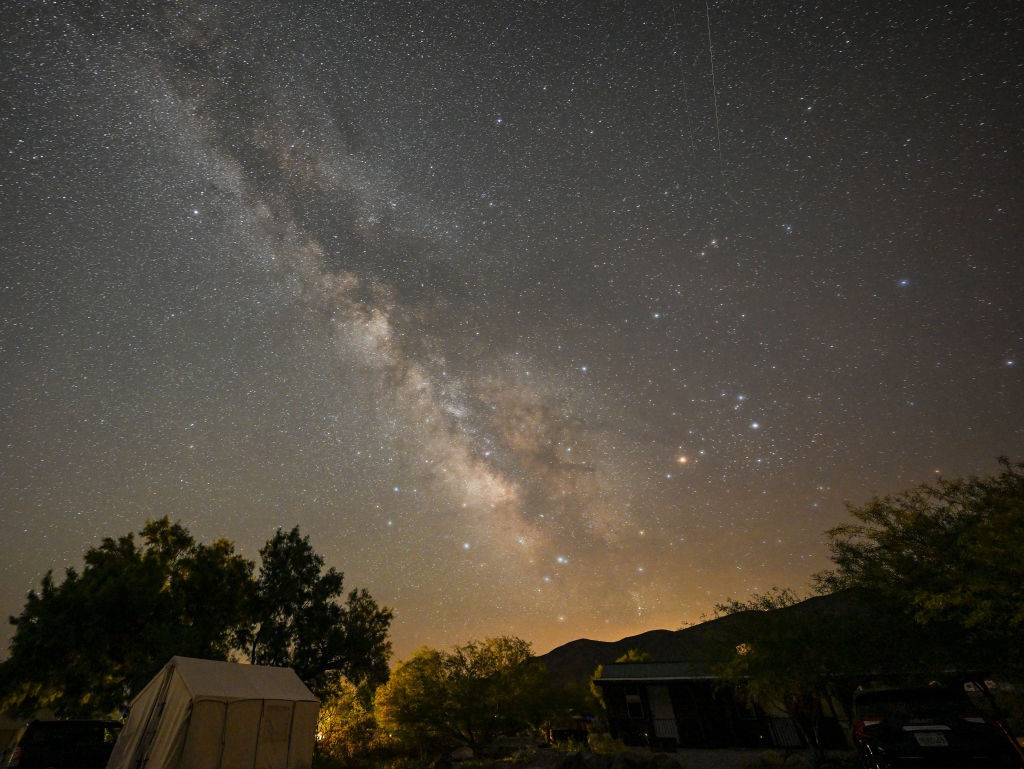
Stargazers will be in for a treat this weekend as the spectacular Lyrid meteor shower is set to peak.
The Lyrids are one of the oldest known meteor showers, having first been recorded by Chinese astronomers over 2,700 years ago.
The meteor shower, which is seen annually, comes from the constellation Lyra, known as the Harp, in the northeastern sky.
On an average night, skywatchers can anticipate spotting 15 to 20 meteors per hour during the Lyrid shower, however, occasionally it can intensify, unleashing a meteoric storm capable of producing up to 100 shooting stars per hour in what astronomers term an "outburst."
 The Lyrids are set to put on a spectacular show. Credit: Zhou Wanping/VCG via Getty Images
The Lyrids are set to put on a spectacular show. Credit: Zhou Wanping/VCG via Getty Images
The Lyrids will be active between April 14-30, but those hoping to witness the spectacle will have their best chance when it peaks from late in the evening of April 21 until dawn on April 22.
Around 18 meteors per hour will be visible to the naked eye at the peak, traveling at around 47km (29 miles) per second.
According to NASA: "Lyrids don’t tend to leave long, glowing dust trains behind them as they streak through the Earth’s atmosphere, but they can produce the occasional bright flash called a fireball."
To catch a glimpse of the Lyrids, skygazers are told to look for the star Vega, which is one of the brightest in the sky and is possible to spot even in areas with heavy light pollution .
Astronomers also advise looking away from the radiant point of the Lyrids, as they will appear longer and more impressive due to an effect of perspective known as foreshortening.
 Skygazers are told to look away from the radiant point for the best view. Credit: Simon Robling/Getty Images
Skygazers are told to look away from the radiant point for the best view. Credit: Simon Robling/Getty Images
Explaining how best to view them, NASA advises: "Find an area well away from city lights or street lights. Come prepared with a sleeping bag, blanket, or lawn chair. Lie flat on your back with your feet facing east and look up, taking in as much of the sky as possible.
"After about 30 minutes in the dark, your eyes will adapt and you will begin to see meteors. Be patient – the show will last until dawn, so you have plenty of time to catch a glimpse."
Those hoping to see the shower may face a little bit of a challenge thanks to the presence of an almost full moon during the peak on the night of April 22.
According to NASA meteor expert Bill Cooke, the prime viewing window typically precedes dawn, with the Lyrids making their grand entrance starting around 10:30PM local time.
"It's not ideal with the bright moon, but dedicated viewers may still witness a few impressive meteors," Cooke said.
 The Lyrids will be at their brightest this weekend, Credit: Tayfun Coskun/Anadolu Agency via Getty Images
The Lyrids will be at their brightest this weekend, Credit: Tayfun Coskun/Anadolu Agency via Getty Images
The Lyrid meteor shower traces its origin to Comet Thatcher, a celestial wanderer on a 415.5-year journey around the sun.
Its last close encounter with our star dates back to 1861, leaving behind a trail of cosmic debris that graces our skies each April.
The comet is currently continuing its journey away from the Sun, reaching its furthest point around 2070, and will then be visible from Earth around the year 2283, per Earth Sky.















